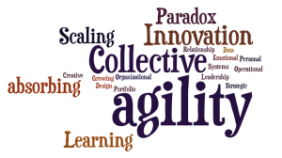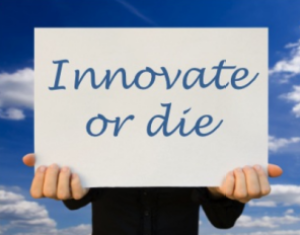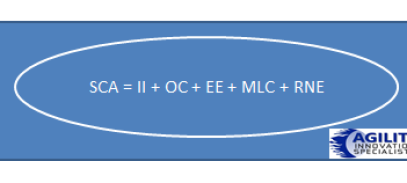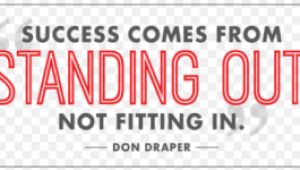
Continue reading “Questioning internally those many product failures”
Building Your Innovation Intelligence
Bringing my thinking and solutions to your problems

Continue reading “Questioning internally those many product failures”
 Finally, I am completely surrounded by inspiration, ideation and implementation. I have that feeling of being somewhat overwhelmed, I can’t twist and turn anymore, it simply will not go away.
Finally, I am completely surrounded by inspiration, ideation and implementation. I have that feeling of being somewhat overwhelmed, I can’t twist and turn anymore, it simply will not go away.
Do I throw myself off the building or decide to listen a little longer? It really is forcing me to think.
Today it seems whenever I pick up a business book each chapter has a section on it.
Also, I seem not to be able to not fall over all the articles extolling its virtues, I mindlessly “Google it” and you can see your whole life flash before you, if you decided to investigate this seriously.
What am I talking about?
Well, nothing other than Design Thinking. I know, most of you are so heavily into this you feel you might as well ‘flip’ over to the next article but are you, really?
Continue reading “Inspiration, Ideation and Implementation”
 Agility is important to me. For me, agility and innovation have needed to always go together.
Agility is important to me. For me, agility and innovation have needed to always go together.
I named my company Agility Innovation Specialists and at its core, we state that the value of this focus can offer a real “intensity in innovation” that we believe reflects today’s world of need.
We encourage you to disrupt the accepted, to constantly challenge the current ways and push into uncomfortable territory. We suggest you seek out customers’ unmet needs, and unexplored opportunities to give a new diversity to any thinking, and then we set about accelerating these ideas to fruition. Those all need abundant and constant agility.
Continue reading “Building Collective Agility for Innovation”
The three horizons offer us much to frame our innovating future
 Following a couple of recent posts on reflecting on the three horizons methodology, firstly here and then here, I wanted to come back to where I see real value, in managing your innovating future.
Following a couple of recent posts on reflecting on the three horizons methodology, firstly here and then here, I wanted to come back to where I see real value, in managing your innovating future.
The 3H methodology enables us to look out into the future, across three different horizons that can manage the transition between the short, medium and long term in our innovation activities, something often badly lacking in most organizations’ thinking.
It allows us to gauge the challenges, adding aspects we are beginning to gain a sense of, transitioning from one position to another. It allows us to deepen our evaluation of the innovation portfolio of activities, resources and skillsets across different delivery frames of the short, medium and longer term.
Continue reading “Seeing Your Innovating Future Across Different Horizons”

 The balance between risk mitigation and being equipped for risk readiness is still an ongoing struggle to balance for most organizations in their innovation activities.
The balance between risk mitigation and being equipped for risk readiness is still an ongoing struggle to balance for most organizations in their innovation activities.
There is still a continued reluctance for exploring new radical innovation opportunities and although organizations ‘talk’ growth, they continue to struggle in achieving it through new innovation.
The incremental commitments to innovation still rule the day to move growth along. Until new sustaining confidence returns to our economies, risk mitigation dominates as markets continue to be more volatile and unreliable in predictive data and executive sentiment remains cautious.
Our organizations are looking for a higher certainty of return and seek sometimes endless validation and justification before they commit, even to small incremental changes. It is no wonder incremental innovation dominates in our innovation decisions; it is where reality sits for many. Are we heading off in a bad innovation direction?
Continue reading “Are our organizations ossifying their innovation or simply have no clue?”
 One of those defining extracts I came across many years back, as it is one that has shaped much of where I believe innovation needed to go, let alone where I believe it still does.
One of those defining extracts I came across many years back, as it is one that has shaped much of where I believe innovation needed to go, let alone where I believe it still does.
It is a pathway I want to continue to travel along and will constantly try to encourage others to equally take the walk.
I was working through a set of presentation files today and came across this extract again and thought I must share this. It rings true as much as it did those years back.
“Strategy is useless without innovation; innovation is directionless without strategy”.
Continue reading “The Ability to Move Innovation from the Existing to the Preferred”
 I’ve strongly believed when you begin to think through a framework for innovation, see my last article as an example, you also should equally need to recognize the capability framework that you will need to build into this.
I’ve strongly believed when you begin to think through a framework for innovation, see my last article as an example, you also should equally need to recognize the capability framework that you will need to build into this.
Working through these as essential combinations can become the real enabler.
Here is my solution that I think is worth working through, to firstly absorb and then consider for applying to your own innovation building activity. Try it!
I have worked on a formula SCA = II + OC + EE + MLC + RNE for this. I have never published the make-up of this in the public domain before, although I had briefly outlined it in a past post here.
In that post I outlined my thinking and I do not think it needs repeating, does it? So onward…….
Continue reading “Building an innovation framework that has real capabilities as its formula as its heart.”
 What is striking me recently is the upsurge in the software being specifically designed for managing innovation within our organizations.
What is striking me recently is the upsurge in the software being specifically designed for managing innovation within our organizations.
The competition seems to be warming up in the more ‘standalone’ out-of-the-box segment and the innovative tools being provided are certainly accelerating the innovation process.
The software being provided is going well beyond the simply mining and capturing of promising ideas. The solutions are moving into sound idea enrichment, evaluation processes and managing a portfolio of innovation in more holistic ways.
The providers here, namely Hype, Brightidea, Spigit, Imaginatik and a growing group of others have been significantly improving their ‘front end’ offerings to capture and develop concepts
They are increasingly turning their attentions to the ‘back end’ and support with a greater focus on governance, knowledge repositories, campaign cockpits, evaluation and dialogue exchange mechanisms. Mobility has also been a growing feature to capture innovation ‘on the go’.
Continue reading “Are we moving towards integrated software for innovation management?”
 I seem to be reading a lot about the concept of value creation recently.
I seem to be reading a lot about the concept of value creation recently.
It seems to have the same ‘heady vaulted position’ as innovation in that we all talk far more about the ‘promise’ of it. So what is behind value creation?
What drives it? What will allow us to stand out as the place to invest in?
So what is value creation?
Value creation is highly dynamic, it is going on all the time and can increase, decrease or transform in different ways when you exploit your different capitals that will change and reflect your organization’s business activities and eventual outputs.
This is when you can begin to see the value created by the use of deploying all the capitals.
Continue reading “So what drives value creation?”